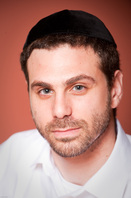In Sickness and in Health - What Jewish Law Can Say about Psychology and Psychiatry

By Rabbi Ira Bedzow, MA Rabbi Ira Bedzow Rabbi Ira Bedzow is a 2013 recipient of the Emory Center for Ethics Neuroethics Travel Award. He is the project director for Moral Education research project for the TAG Institute, and is currently pursuing his PhD in Religion at Emory University. While it is obvious that the term " insanity " expresses the value judgments of a society's legal system, psychology and psychiatry also accept social mores as a guideline for determining mental illness and health, even when their practitioners deny doing so . For example, according to the DSM-5, mental illness is diagnosed by dysfunctional behavior (though some psychiatrists are pushing for a biological categorization of mental illness ) and thus assumes social or cultural norms by which to interpret behavior in order to determine whether it is dysfunctional or not. Because insanity and mental illness are both predicated on social norms, they are by definition determined by society'

